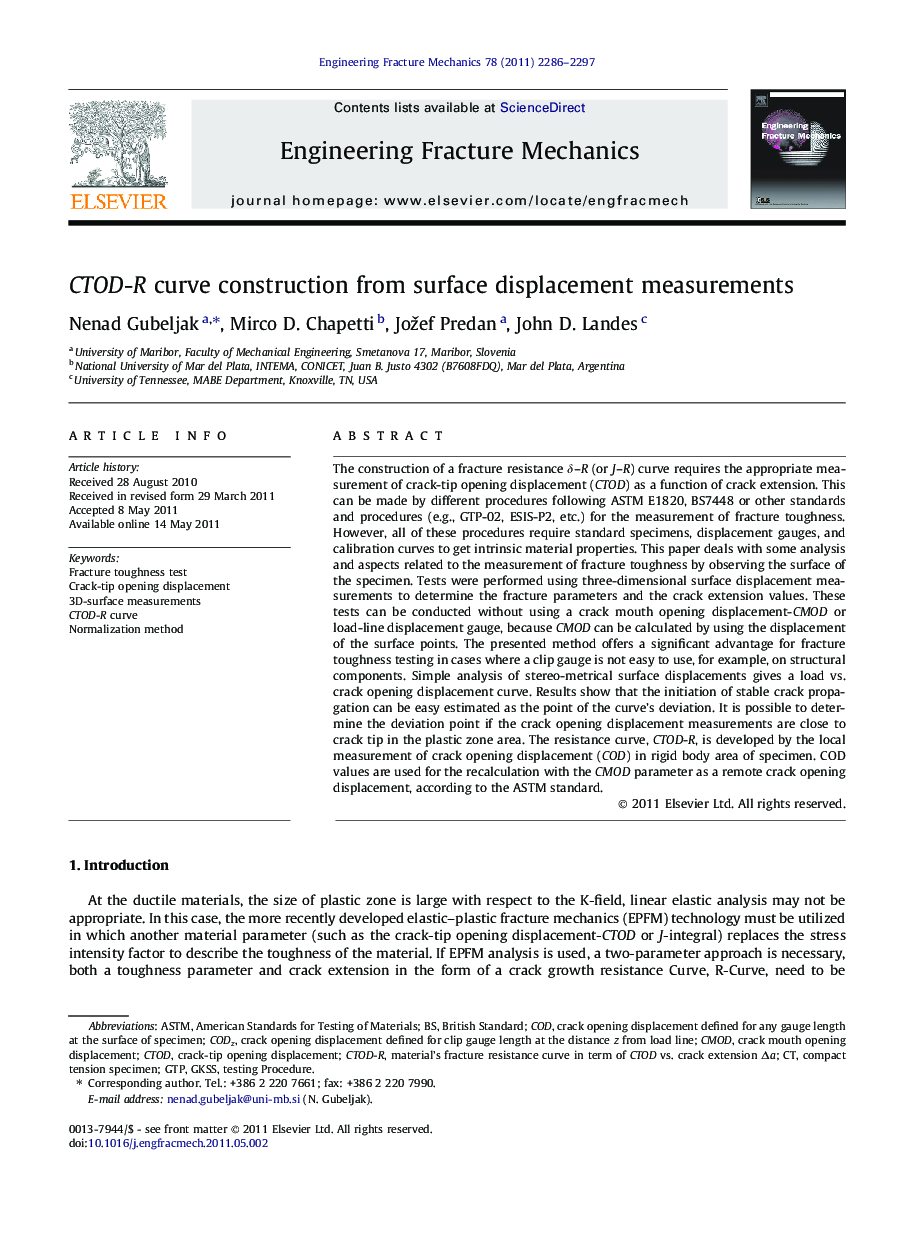| Article ID | Journal | Published Year | Pages | File Type |
|---|---|---|---|---|
| 767619 | Engineering Fracture Mechanics | 2011 | 12 Pages |
The construction of a fracture resistance δ–R (or J–R) curve requires the appropriate measurement of crack-tip opening displacement (CTOD) as a function of crack extension. This can be made by different procedures following ASTM E1820, BS7448 or other standards and procedures (e.g., GTP-02, ESIS-P2, etc.) for the measurement of fracture toughness. However, all of these procedures require standard specimens, displacement gauges, and calibration curves to get intrinsic material properties. This paper deals with some analysis and aspects related to the measurement of fracture toughness by observing the surface of the specimen. Tests were performed using three-dimensional surface displacement measurements to determine the fracture parameters and the crack extension values. These tests can be conducted without using a crack mouth opening displacement-CMOD or load-line displacement gauge, because CMOD can be calculated by using the displacement of the surface points. The presented method offers a significant advantage for fracture toughness testing in cases where a clip gauge is not easy to use, for example, on structural components. Simple analysis of stereo-metrical surface displacements gives a load vs. crack opening displacement curve. Results show that the initiation of stable crack propagation can be easy estimated as the point of the curve’s deviation. It is possible to determine the deviation point if the crack opening displacement measurements are close to crack tip in the plastic zone area. The resistance curve, CTOD-R, is developed by the local measurement of crack opening displacement (COD) in rigid body area of specimen. COD values are used for the recalculation with the CMOD parameter as a remote crack opening displacement, according to the ASTM standard.
